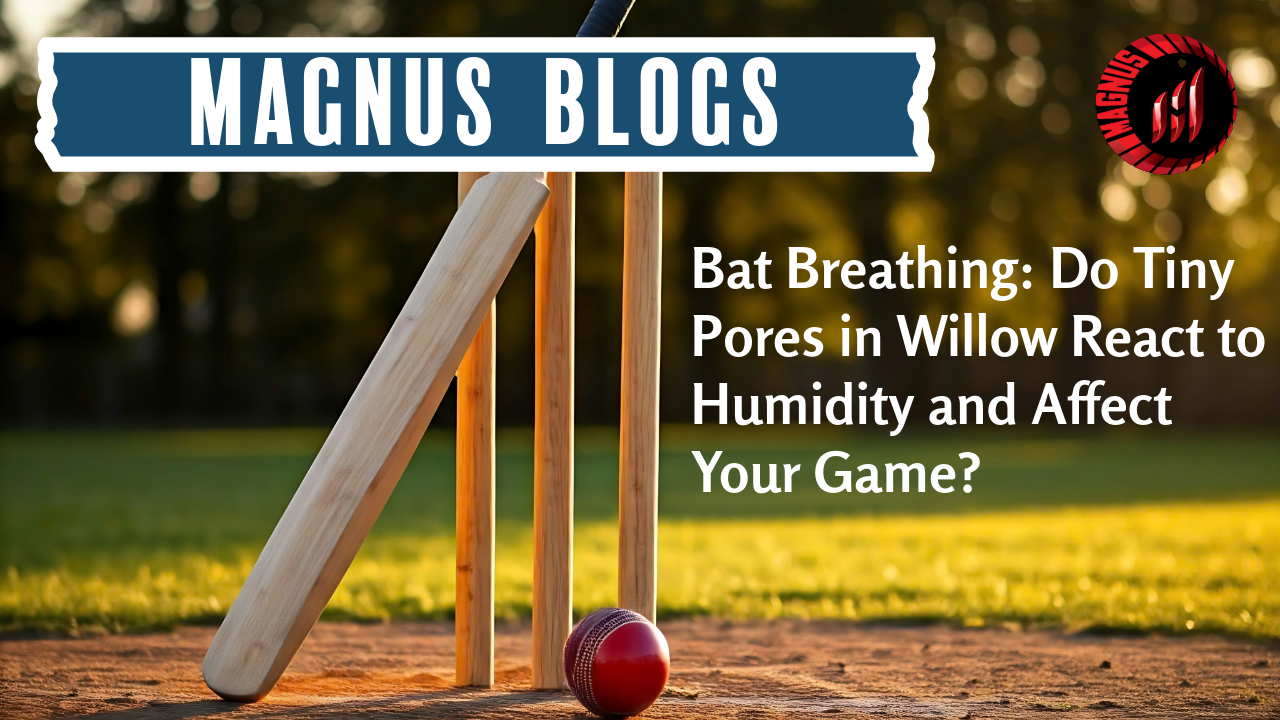Cricket bats are celebrated for their craftsmanship, performance, and tradition. But beneath the polished surface lies a question rarely asked — is your bat actually breathing?
Not in a literal, biological sense. But willow, being a natural wood, has microscopic pores and fibers that react to the surrounding environment — including humidity and moisture. This interaction could subtly affect your game in ways most players never consider.
In this blog, we explore the concept of bat breathing — and how the climate, air, and storage conditions could influence your bat’s behavior.
What Do We Mean by “Bat Breathing”?
Willow wood contains tiny pores and a network of capillary-like structures that originally carried water and nutrients through the living tree. Even after the wood is harvested, dried, and pressed into a bat, these structures don’t disappear — they become part of the bat’s unique personality.
These pores can:
-
Absorb ambient moisture
-
Expand or contract with humidity
-
Gradually influence the wood’s weight, density, and flexibility
This is what we call “bat breathing” — the ability of willow to respond to its environment long after it's made into a bat.
How Humidity Affects a Bat’s Performance
The surrounding climate — especially humidity levels — can directly impact how your bat feels and performs:
1. In High Humidity:
-
Willow absorbs moisture from the air
-
Bat may feel slightly heavier
-
Response (ping) may become softer or more muted
-
Slight increase in grain swelling or wood softness
2. In Dry Conditions:
-
Willow loses moisture to the air
-
Bat becomes lighter, potentially more brittle
-
Ping may become sharper, but with a higher risk of cracking
-
Shrinkage may make the bat more susceptible to surface cracks or seam indentations
Over time, repeated cycles of moisture gain and loss can influence a bat’s structure — especially if it's not stored properly.
Why This Matters to Players
Most players think of their bats as fixed tools. But when humidity changes from one match to another, especially in places like the UK, India, or Australia, your bat might not be the same every time you pick it up.
-
Ever noticed your bat feels heavier on a rainy day?
-
Or lighter and crisp in a dry indoor net?
-
That’s bat breathing in action.
Understanding this can help players make smarter decisions — from match prep to storage habits.
How to Protect Your Bat from Breathing Too Much
If left unmanaged, bat breathing can shorten the lifespan of your gear. Here’s how to limit the effects of environmental changes:
1. Use a Bat Cover or Bat Coffin:
-
Reduces exposure to air, sunlight, and moisture fluctuations.
2. Store in a Stable Environment:
-
Avoid garages, basements, or car boots.
-
Ideal temperature: Cool, dry, and consistent.
3. Oiling the Bat Properly:
-
Linseed oil acts as a natural sealant that controls how much moisture the bat absorbs.
-
Don’t over-oil — it can clog the pores completely and affect performance.
4. Avoid Sudden Climate Changes:
-
Don’t move a bat straight from cold to hot storage.
-
Let it acclimate slowly to avoid internal stress.
Does “Breathing” Explain Why Bats Change Over Time?
Yes. Part of what makes older bats feel different isn't just use — it’s environmental aging. Wood that’s been exposed to years of humidity shifts behaves differently than freshly pressed willow.
-
The bat may become more “dead” feeling.
-
Or oddly, some bats “open up” and feel more alive with age.
-
These changes are often the result of internal shifts due to breathing cycles.
Cricket bat types, Cricket equipment in usa, Cricket equipment store, Cricket gloves, Cricket helmet, Cricket kit bags, Cricket retailers, Durable cricket gloves, English willow bats, Icc approved helmets., Kashmir willow cricket bat, Latest kashmir willow bat
